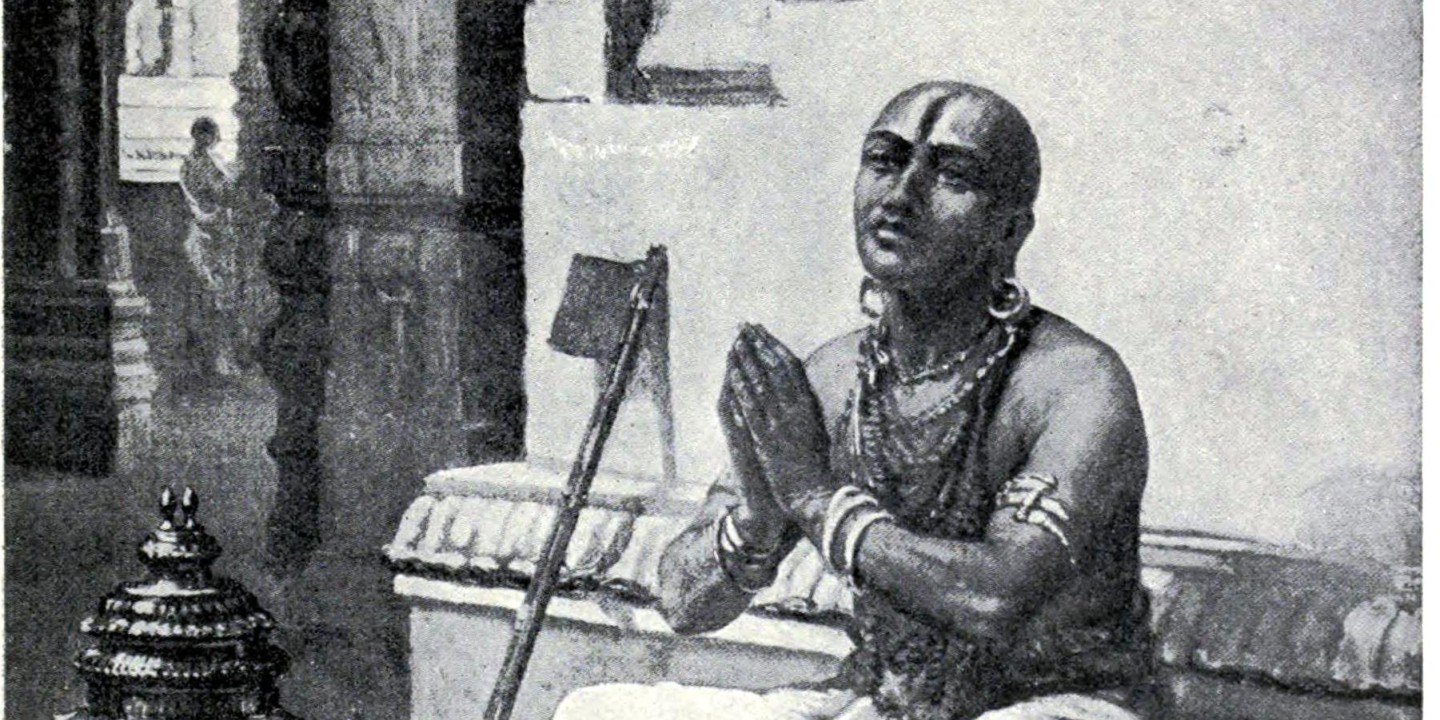A toast to Ramanuja
Martin Luther isn’t the only theologian for whom we celebrate a major anniversary this year.

Political upheaval aside, 2017 is a memorable year for anniversaries. Three have been on my mind: the 1,000th anniversary, according to traditional reckoning, of the birth of Hindu theologian Ramanuja, the 500th anniversary of Martin Luther’s 95 Theses, which launched the Reformation, and the 100th anniversary of Our Lady of Fatima. I think I see some connections between them.
What Ramanuja accomplished so long ago was to defend the logic of theistic worship against the dominant monistic mysticism that erased the distinction between individual souls and God. He wrote Sanskrit commentaries on the Brahma Sutras and the Bhagavad Gita, yoking philosophical theology to popular devotion and making vernacular piety intellectually respectable. As the authoritative teacher for the South Indian Sri Vaishnava tradition—devotees of the deity Vishnu and divine consort Sri—he reformed the temple cult, purifying it of non-Vaishnava elements. Ramanuja’s God is not an impersonal absolute but a personal Lord, creator, sustainer, and dissolver of worlds, who by his boundless grace descends into embodied forms and deigns to dwell in consecrated images, so that all may see and worship him. The way to God is through loving devotion.
Read our latest issue or browse back issues.
What Martin Luther accomplished 500 years ago is analogous. He, too, defended the logic of theistic worship, purified the temple of idols, and preached the message of divine grace. In the process he reaped a catastrophe for Christian unity; but perhaps it took someone of such vivacious genius and brash vulgarity to bring the church to its knees, where it belongs.
Who can tell what would have happened had Luther remained Catholic? In his dystopic fantasy, The Alteration, Kingsley Amis imagines a Year of Our Lord 1976 in which the Reformation has never occurred and the British Isles and Europe remain stuck in a prescientific Pax Romana ruled by Catholic kings and monarchical popes, with Jean-Paul Sartre a Jesuit and Martin Luther the legendary Pope Germanian I. Theocracy has its charms, Amis suggests, but it chokes off personal freedom; at the center of his story is a boy soprano desperate to escape the surgical “alteration” he is fated to undergo.
I’d like to imagine a more cheerful alternative history, one in which Luther remains within the fold of the Catholic Church, joining forces with kindred reform movements without sowing the seeds of division, preaching the gospel without libeling the Jews, purifying purgatory, spreading the love of scripture, honoring the vocation of marriage, and restraining rather than suppressing popular devotions.
Perhaps it could have turned out thus. Luther believed things that some modern Christians find difficult to swallow. While condemning the outright worship of Mary, he found scriptural warrant for belief in Mary’s immaculate conception and perpetual virginity, and he thought no praise too high for the woman who bore God. He believed in the real presence of Christ in the Eucharist, the real malice of the devil, the real terrors of hell, and the inexhaustible mercy of God.
I wonder whether the Luther of my alternative history could make room in the logic of theistic worship for the cult of the radiant woman who is said to have shown herself a hundred years ago to three children at Fatima, calling for prayer and repentance, revealing the torments of the damned in hell, and prophesying the end of the First World War, the start of the next world war, the rise and fall of Russian communism, and the persecution of the faithful. Pope John Paul II believed that it was Our Lady of Fatima who predicted the assassination attempt against him, and who saved his life on her own feast day by diverting a bullet’s path.
The most Lutheran of recent popes, and perhaps the closest to Ramanuja in spirit, Joseph Ratzinger, when he was prefect for the Congregation of the Doctrine of the Faith, presided over the release in 2000 of the long-guarded third secret of Fatima. He was careful to point out that the Fatima visions were private revelations, worthy of belief yet not binding upon the faithful. Like all such experiences, the Fatima visions were filtered through subjective impressions—imagery seen in devotional books, half-understood rumors of war and political unrest. They should not be interpreted, Ratzinger cautioned, “as if for a moment the veil of the other world were drawn back.”
This is wise. Children are not empty vessels; they are filled with the spirit of their age, the symbols that surround them, and the convictions and prejudices of their families. Personally, I find it hard to believe that the Blessed Virgin wishes to hector us into acts of reparation against God’s offended majesty. Yet when Our Lady of Fatima draws the crowds of pilgrims to her immaculate heart and turns their faces toward the sole Redeemer, I hear an echo of the divine promise. All is grace.
That the means of grace are so ubiquitous and plentiful is a message to celebrate during the joint Lutheran-Catholic commemoration of Luther’s anniversary; reason enough to pay homage to the Queen of Heaven under her appearance as Our Lady of Fatima; reason enough to drink a 1,000th-birthday toast to Ramanuja, of blessed memory.
A version of this article appears in the March 15 print edition under the title “A toast to Ramanuja.”






